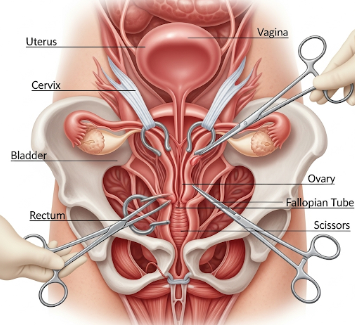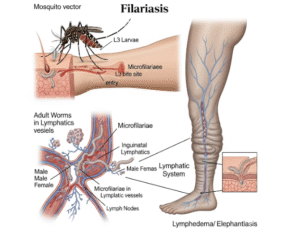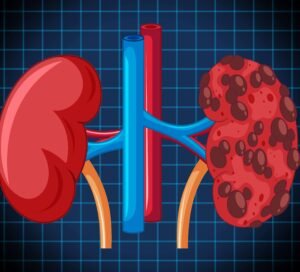Overview
Vaginal hysterectomy is a surgical procedure to remove the uterus through the vagina without abdominal incisions. It is often recommended for women with uterine prolapse, benign fibroids, adenomyosis, or abnormal uterine bleeding, particularly when the uterus is of normal size and no extensive adhesions exist.
South Korea is known for expert gynecologic surgeons, minimally invasive techniques, and comprehensive post-operative care, making it a preferred destination for women seeking safe, effective, and fast-recovery hysterectomy.
What is Vaginal Hysterectomy?
Vaginal hysterectomy involves:
- Removing the uterus through the vaginal canal, eliminating the need for abdominal incisions
- Optional removal of ovaries or fallopian tubes if medically indicated
- Repairing associated pelvic floor disorders, such as prolapse, during the same procedure
Advantages include direct access to the uterus and pelvic organs, minimal scarring, and often shorter recovery compared to abdominal hysterectomy.
Indications for vaginal hysterectomy include:
- Uterine prolapse
- Small to medium benign fibroids
- Chronic pelvic pain or bleeding not manageable with other treatments
- Certain cases of adenomyosis or endometriosis
What are the Benefits?
- No visible abdominal scar
- Shorter operative time compared to abdominal hysterectomy
- Faster recovery and hospital discharge → usually 1–2 days
- Reduced post-operative pain
- Ability to address pelvic floor disorders concurrently
- High success rate in resolving uterine and prolapse-related symptoms
- Minimally invasive approach with expert Korean gynecologic surgeons
Procedure Details
1) How should I prepare for Vaginal Hysterectomy?
- Preoperative evaluation → Blood tests, pelvic ultrasound, Pap smear, and ECG
- Medication instructions → Adjust or stop blood thinners and other medications as advised
- Fasting → Typically 6–8 hours before surgery
- Bowel preparation → May be recommended for better surgical access
- Pre-operative consultation → Discuss surgical plan, potential removal of ovaries/tubes, recovery expectations, and risks
2) What happens during the procedure Vaginal Hysterectomy?
- Anesthesia → General or regional anesthesia (spinal/epidural) administered
- Surgical steps →
- Vaginal access to uterus is established
- Ligaments and blood vessels attached to uterus are carefully ligated
- Uterus removed through the vaginal canal
- Fallopian tubes or ovaries removed if indicated
- Pelvic floor repaired if prolapse or weakness is present
- Duration → Typically 1–2 hours depending on complexity
- Monitoring → Continuous monitoring of heart rate, blood pressure, and oxygen saturation
3) What happens after a Vaginal Hysterectomy?
- Recovery room → Patient monitored until fully awake and stable
- Hospital stay → Usually 1–2 days
- Pain management → Oral or intravenous analgesics provided
- Activity restrictions → Avoid heavy lifting, sexual activity, and strenuous exercise for 4–6 weeks
- Wound care → Vaginal sutures are absorbable; keep the area clean
- Follow-up visits → Monitor healing, check for complications, and assess pelvic floor function
Risks / Benefits
Risks
- ➤ Mild to moderate pain and discomfort
- ➤ Vaginal bleeding or discharge post-operatively
- ➤ Infection (rare)
- ➤ Injury to bladder, ureters, or bowel (rare)
- ➤ Blood clots in legs or lungs
- ➤ Rare complications related to anesthesia
Benefits
- ➤ Minimally invasive with no abdominal scars
- ➤ Faster recovery and shorter hospital stay
- ➤ Effective treatment for uterine prolapse and other benign conditions
- ➤ Improved quality of life with symptom relief
- ➤ High safety and success rates in Korean hospitals
Recovery and Outlook
- Immediate recovery → Mild vaginal bleeding, cramping, or pelvic discomfort for a few days
- Hospital stay → Typically 1–2 days
- Return to light activities → Within 1 week; full recovery in 4–6 weeks
- Long-term outlook → Excellent; most women experience resolution of prolapse, pain, and abnormal bleeding
- Pelvic floor considerations → Physical therapy may be recommended for optimal support
- Follow-up care → Regular gynecologic evaluations and monitoring to ensure proper healing
South Korea provides comprehensive post-operative care, including pain management, pelvic floor therapy, counseling, and follow-up check-ups, ensuring smooth recovery and long-term satisfaction.
When To Call the Doctor
Contact your surgeon immediately if you notice:
- ⚠️ Heavy vaginal bleeding or persistent discharge
- ⚠️ Fever, chills, or signs of infection
- ⚠️ Severe pelvic or abdominal pain not relieved by medication
- ⚠️ Swelling, redness, or unusual discharge
- ⚠️ Urinary problems, difficulty voiding, or constipation
- ⚠️ Shortness of breath or leg swelling (possible blood clot)
Best Korea Option / Process
South Korea is a leading destination for vaginal hysterectomy due to:
- Highly skilled gynecologists with expertise in minimally invasive procedures
- State-of-the-art operating rooms and post-operative care
- Short hospital stays and fast recovery
- Comprehensive pre- and post-operative patient support
- International patient coordination including language support and follow-up
Top Hospitals for Vaginal Hysterectomy in Korea:
- Asan Medical Center, Seoul – Expertise in pelvic floor and minimally invasive gynecology
- Samsung Medical Center – Skilled in vaginal and laparoscopic-assisted procedures
- Seoul National University Hospital (SNUH) – Comprehensive care for uterine prolapse and benign conditions
- Yonsei Severance Hospital – Advanced surgical techniques and international patient services
👉 For women with uterine prolapse or benign uterine conditions, Vaginal Hysterectomy in Korea offers safe, minimally invasive, and highly effective treatment with rapid recovery and excellent long-term results.













